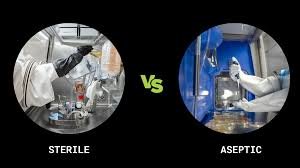Difference Between Aseptic and Sterile Conditions

Difference Between Aseptic and Sterile Conditions
| Aspect | Aseptic Condition | Sterile Condition |
|---|---|---|
| Definition | A controlled environment or practice that prevents contamination by microorganisms. | A state where an object or environment is completely free from all living microorganisms, including spores. |
| Nature | Preventive technique (to maintain sterility). | Absolute state (achieved after sterilization). |
| How Achieved | Through aseptic techniques like cleanrooms, laminar air flow, disinfectants, gowning, controlled material transfer. | Through validated sterilization methods: autoclave (moist heat), dry heat, filtration, gas sterilization, irradiation. |
| Scope | Refers to maintaining sterility during handling, manufacturing, and filling operations. | Refers to the final condition of equipment, product, or environment after sterilization. |
| Examples | Aseptic processing in sterile drug manufacturing, gowning procedure, sterile API filling. | Sterile surgical instruments, sterilized culture media, WFI after sterilization. |
| Key Point | Aseptic = method/practice to prevent contamination. | Sterile = absolute state of no microbial life. |
✅ In short:
-
Sterile means “free from microorganisms.”
-
Aseptic means “without contamination,” i.e., maintaining sterility using controlled practices.
🎓 Discover one of the best Pharmaceutical Microbiology course available —click below to explore the course that’s shaping future Microbiology course skills.

